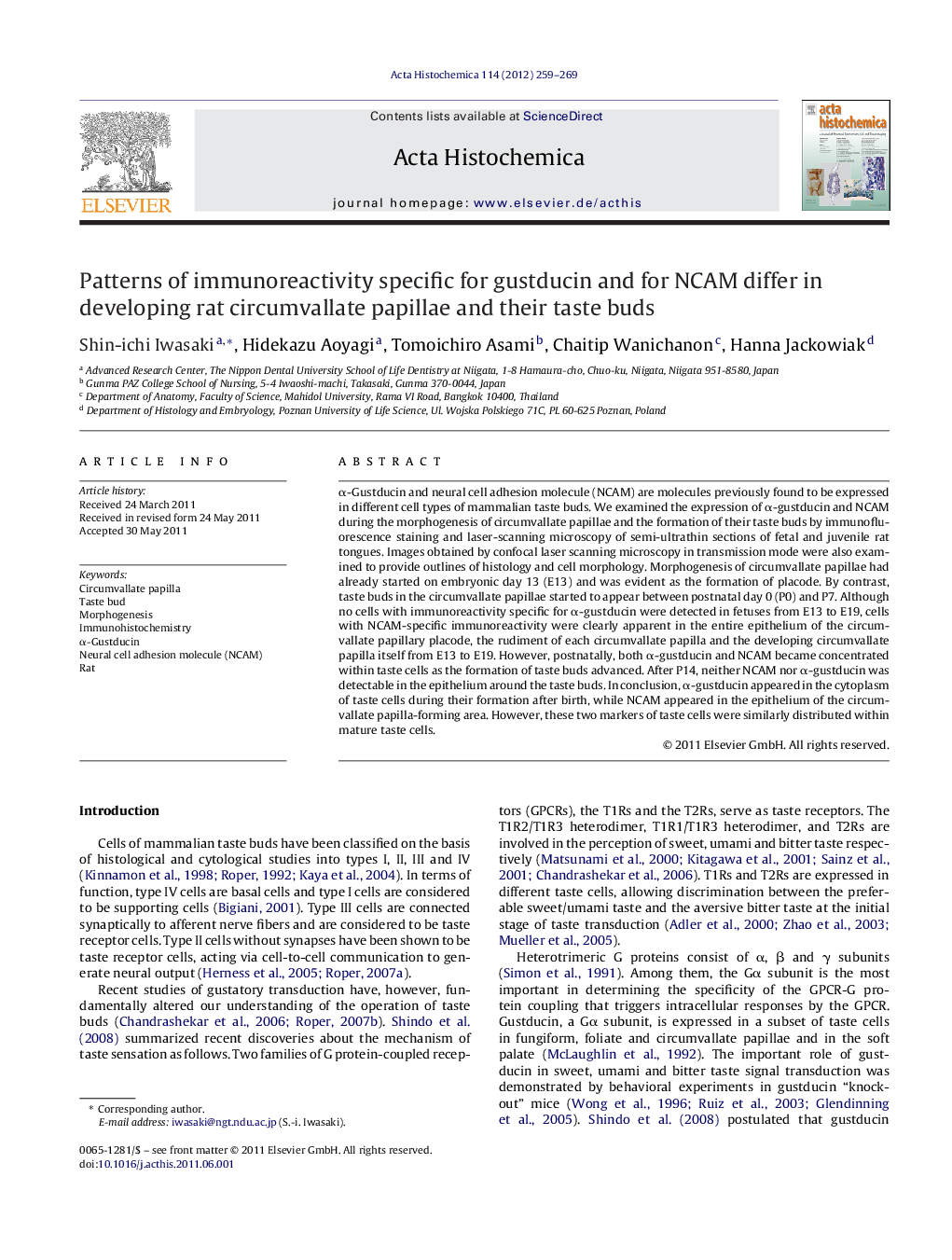| Article ID | Journal | Published Year | Pages | File Type |
|---|---|---|---|---|
| 1923968 | Acta Histochemica | 2012 | 11 Pages |
α-Gustducin and neural cell adhesion molecule (NCAM) are molecules previously found to be expressed in different cell types of mammalian taste buds. We examined the expression of α-gustducin and NCAM during the morphogenesis of circumvallate papillae and the formation of their taste buds by immunofluorescence staining and laser-scanning microscopy of semi-ultrathin sections of fetal and juvenile rat tongues. Images obtained by confocal laser scanning microscopy in transmission mode were also examined to provide outlines of histology and cell morphology. Morphogenesis of circumvallate papillae had already started on embryonic day 13 (E13) and was evident as the formation of placode. By contrast, taste buds in the circumvallate papillae started to appear between postnatal day 0 (P0) and P7. Although no cells with immunoreactivity specific for α-gustducin were detected in fetuses from E13 to E19, cells with NCAM-specific immunoreactivity were clearly apparent in the entire epithelium of the circumvallate papillary placode, the rudiment of each circumvallate papilla and the developing circumvallate papilla itself from E13 to E19. However, postnatally, both α-gustducin and NCAM became concentrated within taste cells as the formation of taste buds advanced. After P14, neither NCAM nor α-gustducin was detectable in the epithelium around the taste buds. In conclusion, α-gustducin appeared in the cytoplasm of taste cells during their formation after birth, while NCAM appeared in the epithelium of the circumvallate papilla-forming area. However, these two markers of taste cells were similarly distributed within mature taste cells.
